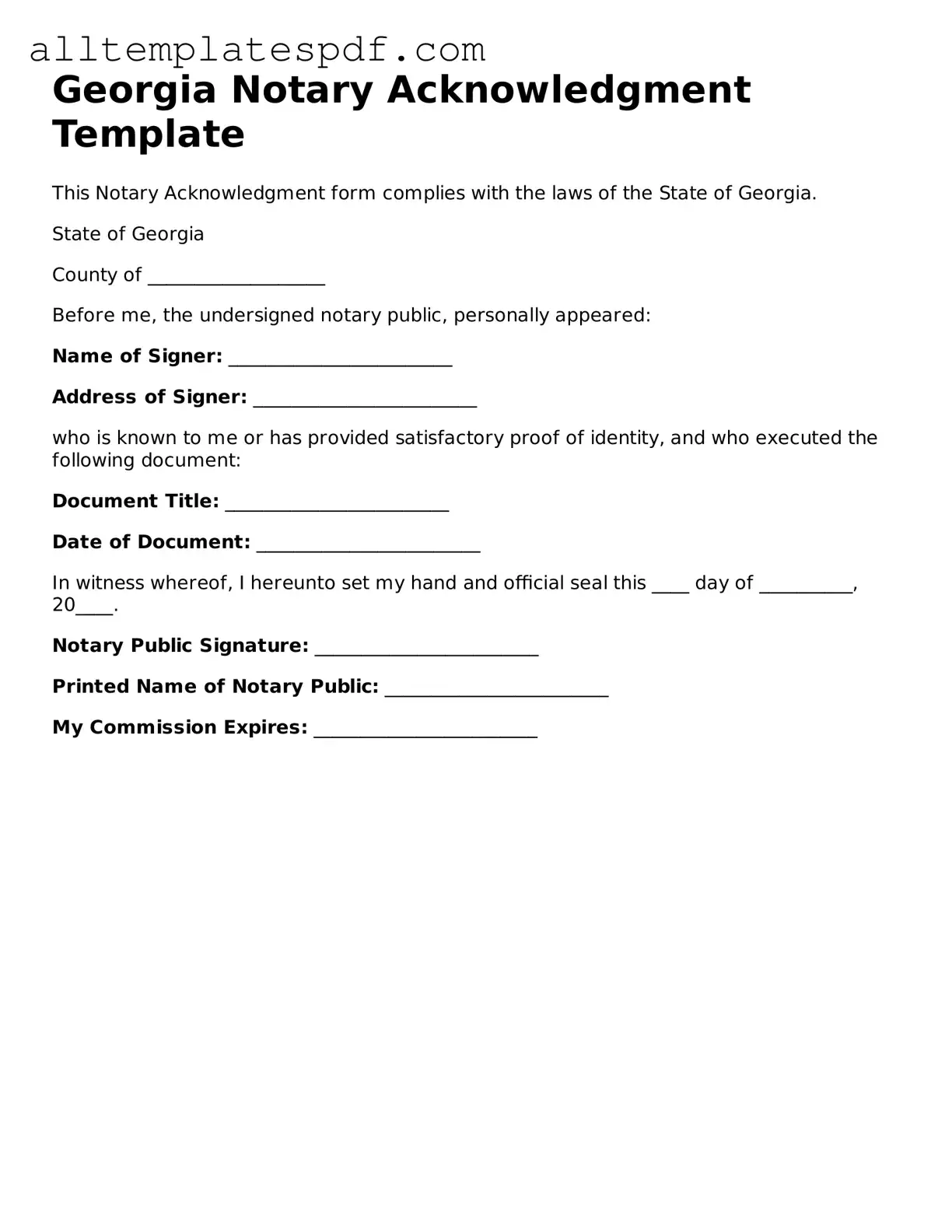Filling out the Georgia Notary Acknowledgement form can seem straightforward, but many people make common mistakes that can lead to delays or rejections. One frequent error is failing to include the correct date. The date is essential because it indicates when the acknowledgment took place. If the date is missing or incorrect, it can invalidate the document.
Another common mistake is not providing the signer’s name clearly. The name must match the identification presented to the notary. If there is a discrepancy between the name on the form and the ID, the notary may refuse to acknowledge the signature.
People also often forget to sign the acknowledgment form themselves. The signer’s signature is crucial for the notary to verify that the person appeared before them. Without this signature, the acknowledgment cannot be completed properly.
Additionally, some individuals neglect to include the notary’s official seal. The seal serves as proof that the notary is authorized to perform this function. Without it, the document may not be legally recognized.
Another mistake is using the wrong type of identification. Notaries in Georgia must verify the identity of the signer using acceptable forms of ID. If an individual presents an ID that is not on the approved list, the notary cannot proceed with the acknowledgment.
People sometimes provide incomplete information in the address section. The notary needs a full address to ensure that all details are accurate. Missing or incorrect addresses can lead to complications later on.
Some individuals fail to check for proper formatting. The Georgia Notary Acknowledgement form has specific requirements for how information should be presented. Not adhering to these guidelines can result in a rejected form.
Lastly, many overlook the importance of reviewing the entire document before submission. Taking the time to double-check all entries can prevent simple mistakes that might cause significant issues down the line. A thorough review can save time and effort in the long run.
